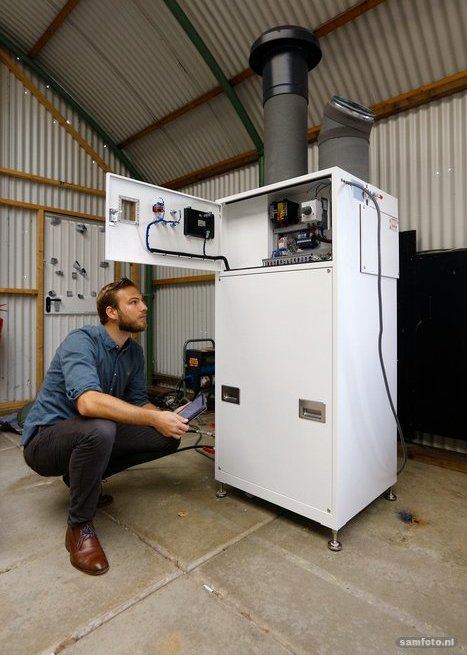Tarnoc develops electrical central heating boiler
The Delft tech start-up Tarnoc was one of the winners of the WarmteWissel 2020 with its heat pump.
The WarmteWissel – or heat exchange – is rooted in practice. Eight housing corporations that own more than 100,000 residences in the province of Brabant install 5,000 gas boilers every year and were looking for gas-free alternatives. Then Tarnoc was named as one of the winners in March last year and it received a prize of EUR 20,000 and the opportunity to test a prototype for three months in a home in Tilburg.
We already know what heat pumps are. They transport heat from low to high temperatures and have the advantage that there is significantly more heat emitted than the amount of electricity used to generate it. The Tarnoc heat pump has special qualities, explains Tarnoc founder Vincent Wijdeveld. In contrast to other heat pumps or refrigerators, Tarnoc’s Turbineketel does not circulate fluorinated coolants, but pure outdoor air instead. The compressor heats the air by compressing it. The heat in turn heats up the water in the central heating system. The output temperature can go up to 80 degrees Celsius. After the heat exchanger, the compressed air drives a turbine that returns some of the energy. The electric engine, compressor and turbine are assembled on one axis. The thermal capacity of the boiler is 20 kW.
Co-founder Tijmen de Jong closely examined different thermodynamic cycles. He came across the Brayton cycle that is used in industry in aeroplane airconditioning and in liquifying natural gas. In reverse, the Brayton cycle produces high temperature heat with a high capacity and without using coolants. This system had never been used in homes and was the start of their work on the Tarnoc Turbine boiler.
The pilot in Tilburg went well, reports Wijdeveld. The unit is now being fitted in the The Green Village campus testing ground. The next step is to deliver eight turbine boilers to the eight housing corporations involved in the WarmteWissel. The plan is to start producing the first series in 2022. “The equipment is fairly simple and easy to manufacture at industrial scale,” says Wijdeveld. “The intelligence part is in the software.”
